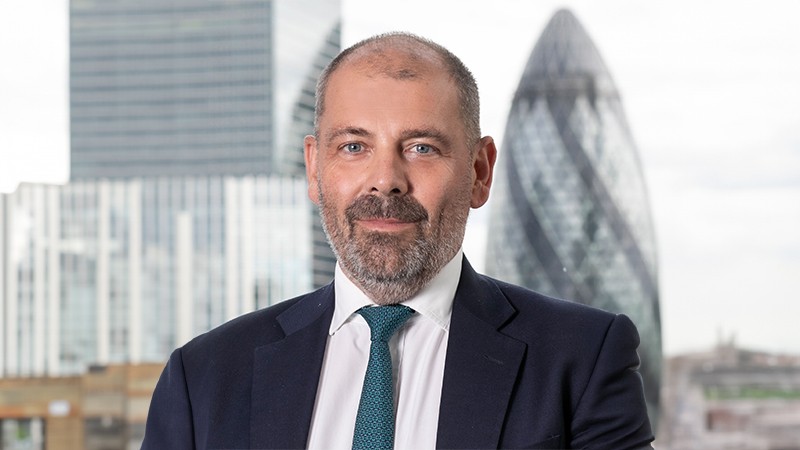Infrastructure funds are among the investment success stories of the post-global financial crisis era, offering the attraction of a high income backed up by a portfolio of long-term, often regulated, government-backed, inflation-linked and/or essential assets.
They have tapped into themes such as the digital economy and ESG trends, including the energy transition—to the extent that the Association of Investment Companies (AIC) now has a dedicated sector for renewable energy infrastructure—often presenting their portfolios as being aligned with the United Nations’ Sustainable Development Goals.
Many have traded consistently at a premium to net asset value and have been in the vanguard of both primary and secondary capital raising in the investment companies sector. Yet they were among the hardest hit in the market rout that followed the Truss/Kwarteng mini-budget in September 2022, and on average the AIC Infrastructure sector has seen a share price decline of 6.6% over the past 12 months.
With evidence of a turnaround in performance now emerging, do infrastructure funds still have a part to play in a diversified portfolio, and what are the risks and opportunities?
Renaissance and risk
Infrastructure investment is by no means a new idea; indeed, many of the first investment companies in the late 1800s were predicated on deploying private capital to build canals, railways and roads. However, with many of these projects proving spectacularly unsuccessful, investors grew to prefer other asset classes such as equities and bonds over successive decades.
In the UK, the renaissance of infrastructure investment began with the introduction of the Private Finance Initiative in the 1990s, with public-private partnerships set up to channel private capital into the development of schools, hospitals and public transport. Investors liked the combination of explicit government support, long-term, contracted revenues and a lack of correlation with equity markets.
In recent years, with interest rates at historically low levels, the income offered by infrastructure funds has been a major draw, helping to drive the growth of the sector. In today’s higher-inflation environment, the explicit inflation linkage of public assets, the quasi-monopoly position of economic assets and the power price exposure of renewable energy assets should all underpin the attractiveness of the sector.
Yet the increase in interest rates means the sector has been hit by an uptick in the discount rates used in long-term cashflow forecasting, as the present value of future cashflows – and therefore the price that investors are willing to pay for a stake in those cashflows – has fallen.
Although the mechanics are the same, it seems counterintuitive that the same phenomenon that has caused severe declines in investment funds focused on more speculative growth assets – such as Scottish Mortgage with its large exposure to US tech stocks – should weigh on real assets where future cashflows are to a large extent quantifiable. Many infrastructure funds have little development risk, preferring to invest for the long term (often more than 20 years) in assets that are already or are close to being operational.
There are, of course, other risks, such as changes in the regulatory environment, obsolescence as a result of newer technologies, or pressure on government funding streams, but many funds offer diversification across geographies and infrastructure types, blending different risk exposures and return profiles in the hope – and largely the expectation – of a fairly smooth, income-generating outcome for investors.
Maximum pessimism has passed
Taking a whistle-stop tour of the AIC Infrastructure sector, there are nine funds, six of which have more than a five-year track record. The two newest funds, Cordiant Digital Infrastructure and Digital 9 Infrastructure, were both launched in the last two years. The majority of the funds have equity-type (direct ownership) exposure to infrastructure assets, although GCP Infrastructure Investments largely provides debt financing. Many focus principally on the UK, although some have more global portfolios.
Looking at performance over the past year, the best (and the only positive) share price returns have come from HICL Infrastructure and GCP Infrastructure Investments. GCP, a largely UK-based portfolio, is around two-thirds exposed to the renewable energy space and has benefited from the effect of higher power prices. HICL is focused on core infrastructure assets in the UK, Europe, North America and Australia/New Zealand. Its biggest portfolio exposures are in transport, healthcare and utilities (electricity and water), and 64% of its revenues are contracted. HICL’s 4.9% dividend yield is lower than GCP’s 6.9%, and it currently trades on a 3.4% premium to NAV, compared with GCP’s 10.1% discount. GCP has been somewhat caught up in the recent concerns about supported housing providers (currently circa 11% of its portfolio), which may help to explain the de-rating from an average discount of 0.7% in its last financial year (to 30 September 2022).
In third place is 3i Infrastructure with its focus on the UK and Europe and a concentrated portfolio of just 12 assets, with its largest exposures in the themes of energy transition (42%) and digital infrastructure (25%). It has the lowest dividend yield in the sector, at 3.3%, and trades on the second highest premium to NAV at 6.6%.
Conversely, the two specialist digital infrastructure funds were among the poorest performers, with a decline of 20% from Cordiant, whose main areas of focus (spread across the UK, Europe and North America) are TV, radio, telecoms, fibre networks and data centres. Digital 9 fared better; its core investment areas are subsea cables (such as for the transmission of electricity from offshore wind farms), wireless communications and data centres. It has seen a notable bounce in the very short year-to-date period, up 10.8% after a positive trading update on 11 January.
Pantheon Infrastructure, underperforming with an 11.9% decline over 12 months, has the largest overseas focus in the sector, with 48% of its portfolio in North America and 41% in continental Europe. It also has a significant exposure to digital infrastructure, at 43% of the portfolio.
The infrastructure sector offers a broad range of strategies and underlying exposures, from the traditional to the more cutting-edge. And although the moment of maximum pessimism may now have passed, with the UK so far surprisingly avoiding a recession and inflation and interest rate expectations on the wane, the current level of valuations on some funds could still offer a potentially attractive entry point for income-seeking investors with an eye towards capital preservation.
| Infrastructure Fund | Total assets £m | Share price YTD % | Share price 1 year % | Share price 5 years % | Discount % | Dividend Yield % |
|---|---|---|---|---|---|---|
| 3i Infrastructure | 3,085.60 | 2.2 | -1.1 | 84.0 | 6.6 | 3.3 |
| BBGI Global Infrastructure | 1,073.30 | 1.2 | -4.5 | 39.3 | 7.7 | 4.8 |
| Cordiant Digital Infrastructure | 825.4 | 0.1 | -20.0 | N/A | -22.2 | 4.8 |
| Digital 9 Infrastructure | 912.1 | 10.8 | -10.5 | N/A | -13.1 | 6.5 |
| GCP Infrastructure Investments | 1,156.30 | -0.6 | 1.0 | 14.7 | -10.1 | 6.9 |
| HICL Infrastructure | 3,344.80 | 1.8 | 1.0 | 38.7 | 3.4 | 4.9 |
| International Public Partnerships | 3,016.70 | 2.3 | -3.0 | 25.5 | 0.6 | 5.0 |
| Pantheon Infrastructure | 477.40 | -0.6 | -11.7 | N/A | -5.6 | 4.2 |
| Sequoia Economic Infrastructure Income | 1,731.60 | -0.2 | -10.4 | 4.8 | -6.4 | 7.8 |
| Sector average | 1,735.90 | 1.9 | -6.6 | 34.5 | -4.3 | 5.4 |











